Pterophyllum is a small genus of freshwater fish from the family Cichlidae known to most aquarists as "Angelfish". All three Pterophyllum species (Altum, Leopoldi, and Scalare) originate from the Amazon River basin in tropical South America. Angelfish are unusually shaped for cichlids being greatly laterally compressed, with round bodies and elongated triangular dorsal and anal fins. They are normally found in swamps or flooded grounds where vegetation is dense and the water is either clear or silty. Depending on the species, most Angelfish are frequently found in the well oxygenated, extremely soft waters, with a pH range between 4.5 to 6.8. Temperature range in their natural habit is between 24°C - 30°C. Angelfish are ambush predators and prey on small fish and macroinvertebrates. All Pterophyllum species form monogamous pairs. Eggs are generally laid on a submerged log or a flattened leaf. As is the case for other cichlids, brood care is highly developed.
In the aquarium, Angelfish are one of the most commonly kept freshwater fish. They are prized for their unique shape, color and behavior. Many hobbyists consider angelfish to be a relatively intelligent fish, able to recognize their owners. Ideal water conditions for Angelfish (hybird species) should be warm water, ideally around 28°C, pH range between 5.5 to 6.8, and a water hardness of up to 5–12 dGH. They will do best if fed a mixture of flake, frozen and live food.
Angelfish do best in groups of 4-6 of the same species. Being Cichlids and like most Cichlids, if you keep just 2 or 3 in the same aquarium, the strongest one will make the others miserable. Sexing can be extremely difficult... Look for a slight cichlid hump on the male, although it's not always accurate. The best way to sex is to look at the breeding tubes on a pair when they are spawning. The male's breeding tube will be much smaller than the female's. Angelfish are compatible with some South American Cichlids such as the Blue Rams, Kribensis or any of the Apistogramma species. Larger tetras are fine. Depending on the size of the angelfish, do not keep with very small tetras or other small fish under one inch in size, they will become lunch, or overly aggressive fish. While Angelfish have been known to eat small fish, this can be largely prevented by adding small fish when the Angelfish are very young. It then doesn't regard these fish as food. Avoid known fin nippers such as Tiger Barbs or Serpae Tetras. Other territorial mid-top dwellers such as Betta splendens and Gouramis are not advisable either as they may become too curious towards the Angels.
Domestic angelfish have been bred and crossbred for several decades. There are hundreds of mutations. These so called 'hybrids' are with little more than a superficial resemblance to wild Pterophyllum species. Some typical Angelfish varieties include, Silver, Zebra, Black Lace, Black, Half Black, Veiltail, Marble, Chocolate, Golden, Blushing, Pearl Scale, Albino, and Koi.

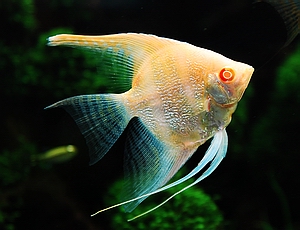
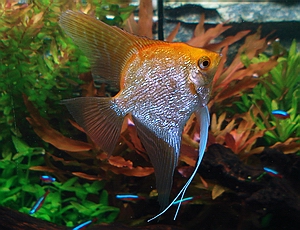
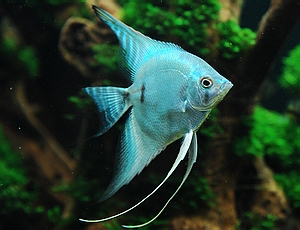
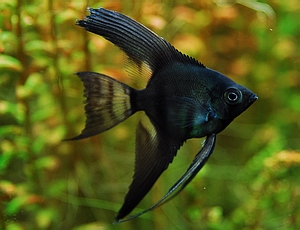
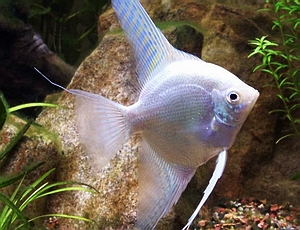
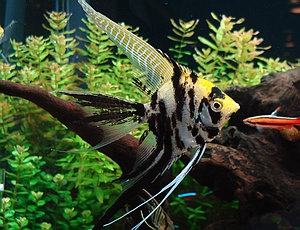
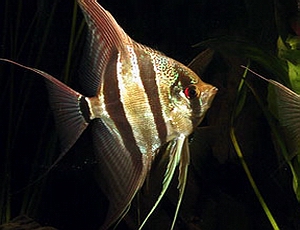
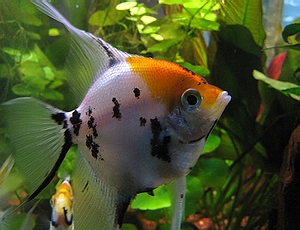

0 comments:
Post a Comment